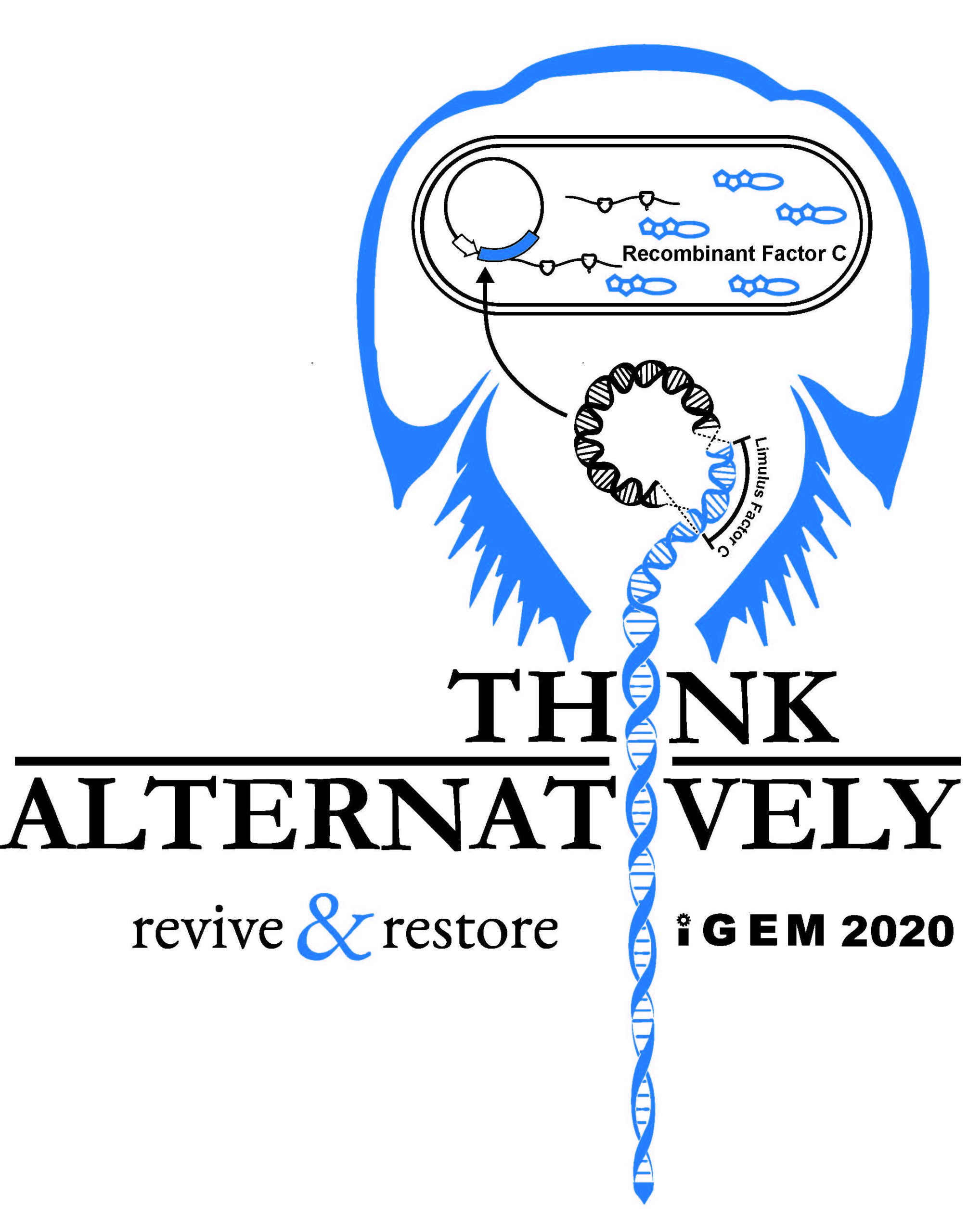IGEM 2020 VIRTUAL GIANT JAMBOREE
The iGEM competition is was live starting November 22, 2020. The awards competition was Sunday, November 22, at 9 am EST / 6 am PST. We congratulate all 12 of our sponsored teams on their fantastic projects. Be sure to check out each team’s promo video, below.
SPONSORING 12 TEAMS FROM AROUND THE WORLD
In Spring 2020, Revive & Restore received 62 unique project proposals from 58 iGEM teams representing 26 countries, 43 colleges, 10 high schools, and 5 community institutions. We had the tough but gratifying task of choosing just 12 teams to sponsor. These 12 projects showed us how synthetic biology can enhance conservation.
Each awarded team received a $5,500 grant to offset their iGEM registration fee. This award is from our Catalyst Science Fund, which we launched in 2018 with a $3 million pledge from biotech company Promega, to advance impactful innovations in conservation.
About iGEM 2020
The International Genetically Engineered Machine (iGEM) Foundation is an independent, non-profit organization dedicated to the advancement of synthetic biology, education and competition, and the development of an open community and collaboration. Visit igem.org.
Due to Covid-19 and social distance requirements, most laboratory work was interrupted. Students were allowed to plan to complete projects over two years: Design and modeling in 2020; then building and testing in 2021.
OUR 2020 TEAMS AND THEIR PROJECTS
WATER REMEDIATION PROJECTS
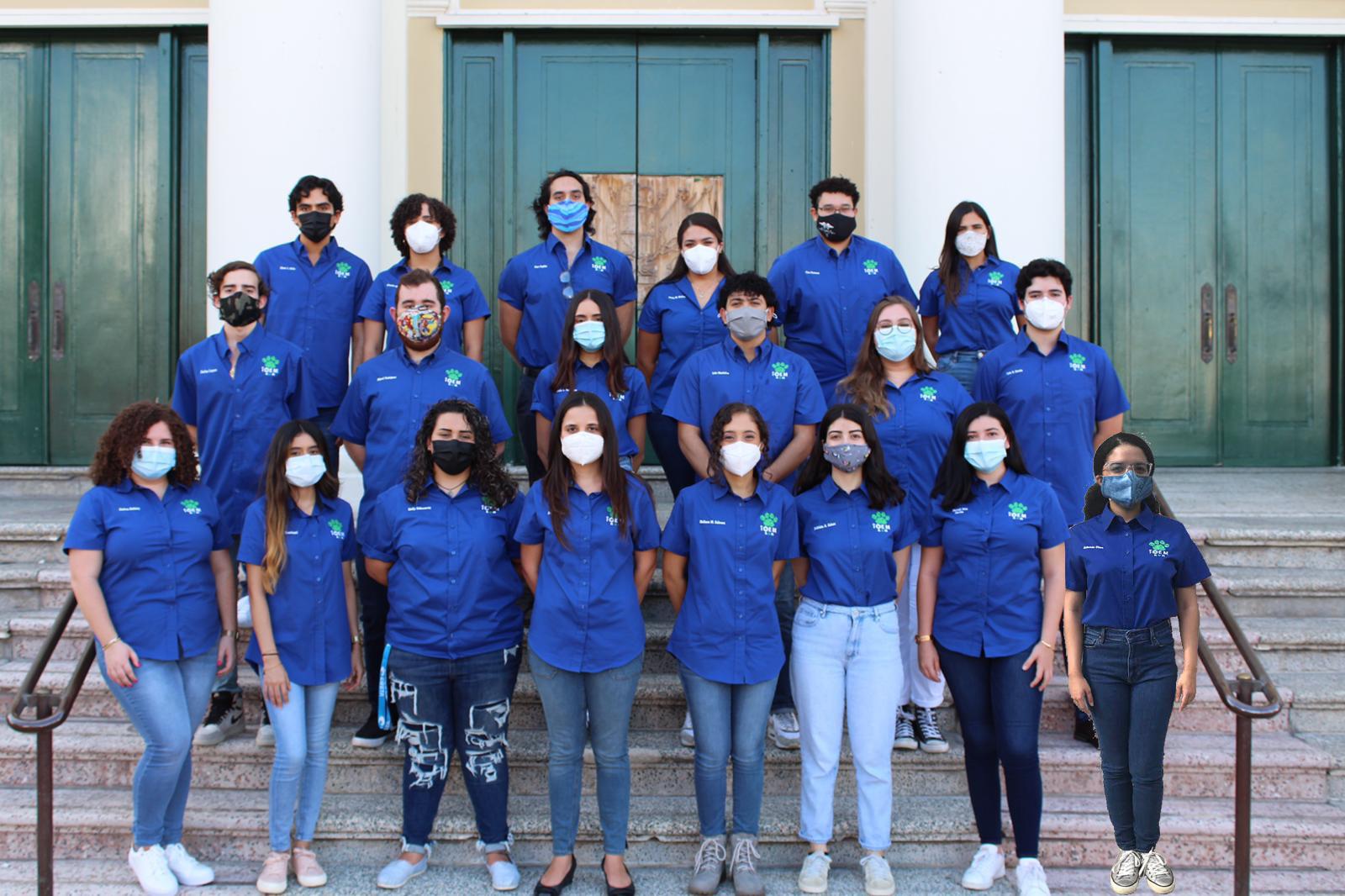
iGEM Team RUM-UPRM 2020.
University of Puerto Rico, United States
Team RUM-UPRM plans to design a device that can bioremediate mercury and PCBs in the bodies of water in and around the small Puerto Rican island of Vieques. Their hardware design will use a two-construct bacterium to detect, absorb, and biodegrade these harmful pollutants.
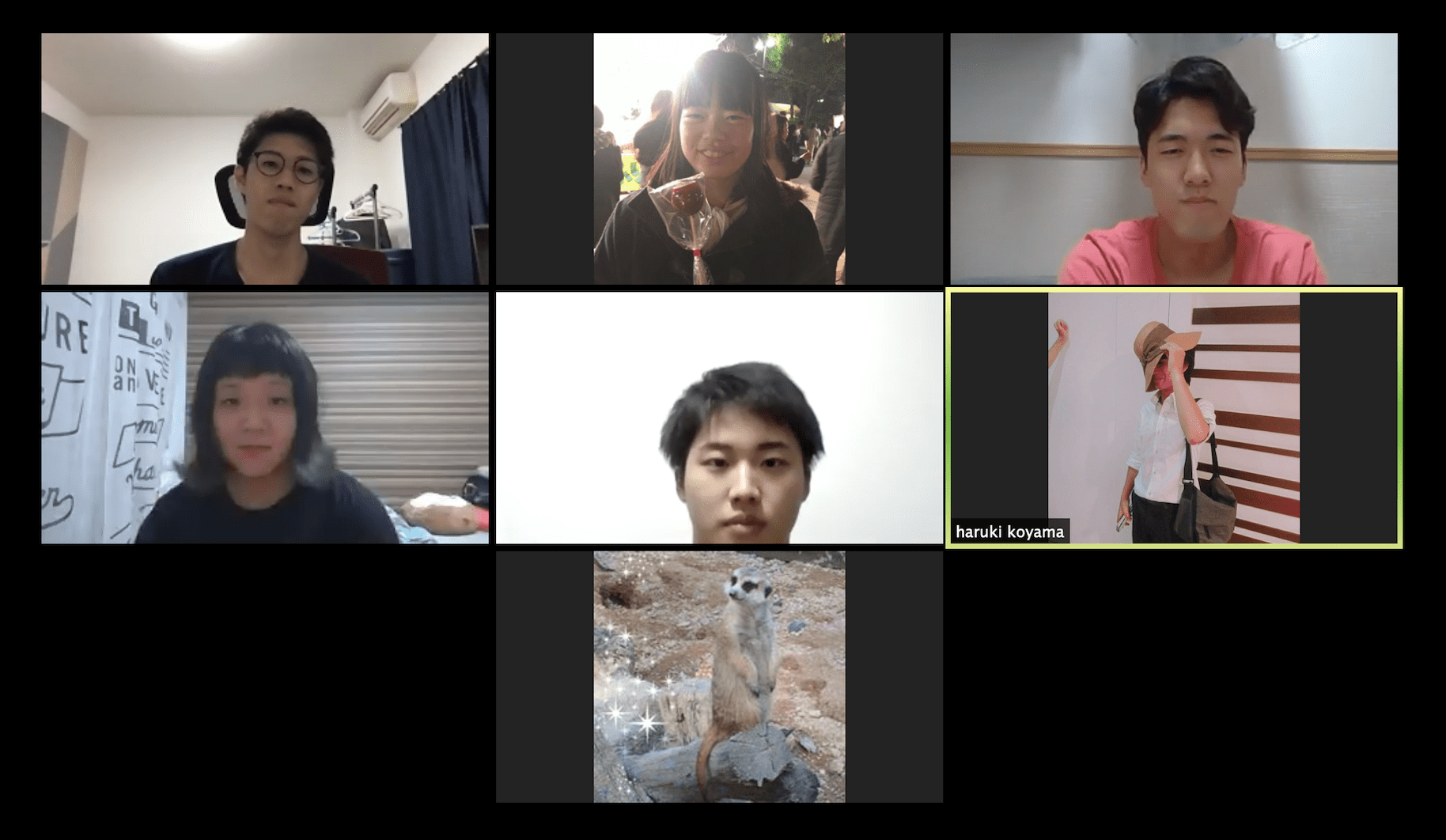
Team QDAI meeting online, July 2020.
Kyushu University, JAPAN
Team Qdai plans to design a system that removes harmful phosphorus from waste water and produces a beneficial soil fertilizer. The design will include a cost-efficient device that may be operated by anyone, anywhere.
SYNTHETIC ALTERNATIVES PROJECTS
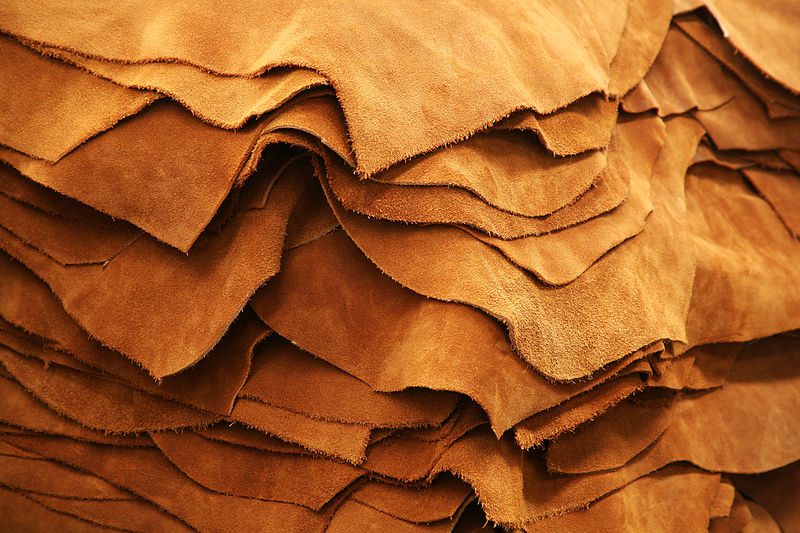
Leather production is highly polluting. (Tomascastelazo Wikimedia)
Beijing National Day School, CHINA
Team BNDS_China is aiming to design a biologically sound, environmentally friendly synthetic leather. A bacterial cellulose material has the potential to greatly improve upon today’s plastics-based “pleathers,” lessen the reliance on live animals, and reduce the attendant polluting factors of both.
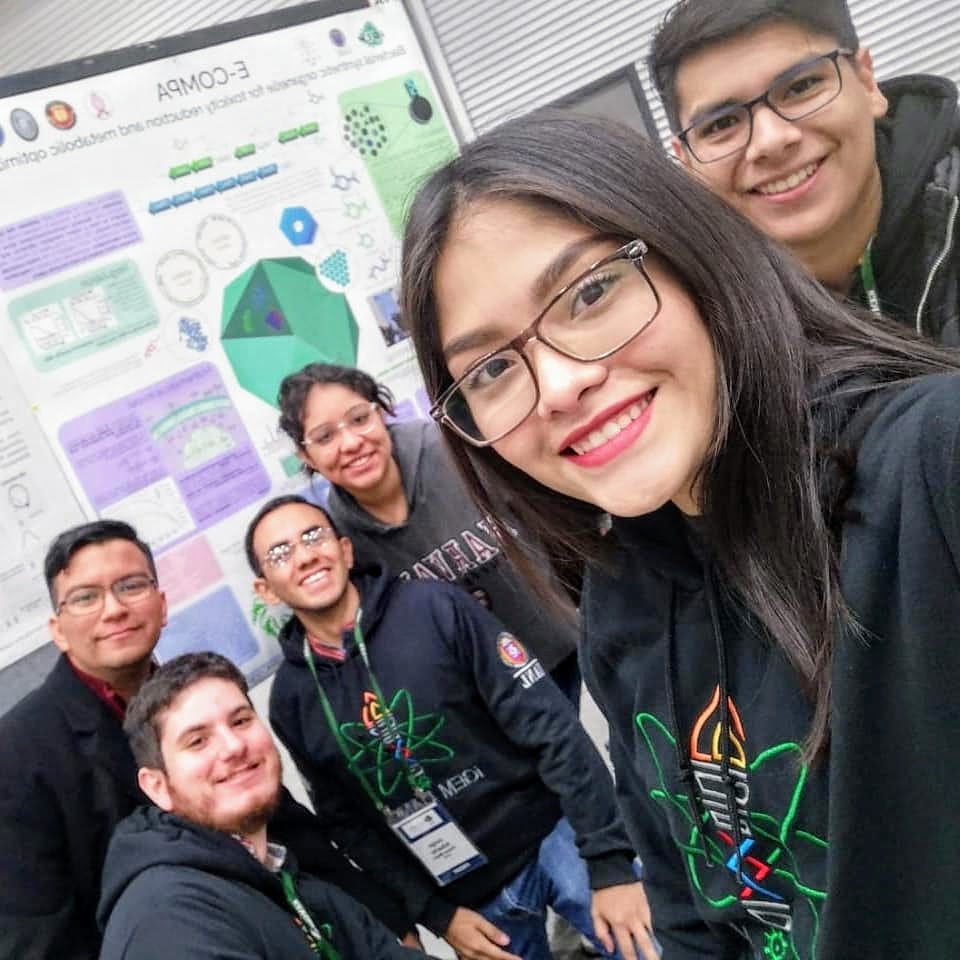
The team at iGEM 2019.
Facultad de Ciencias Biológicas, Universidad Autónoma de Nuevo León, MEXICO
Team FCB-UANL proposes to design an environmentally-friendly, flame retardant foam for fighting wildfires. The design will rely on isolating the surfactant proteins found in the bubble nests of frogs, which enables these nests to maintain integrity even in harsh desert climates.
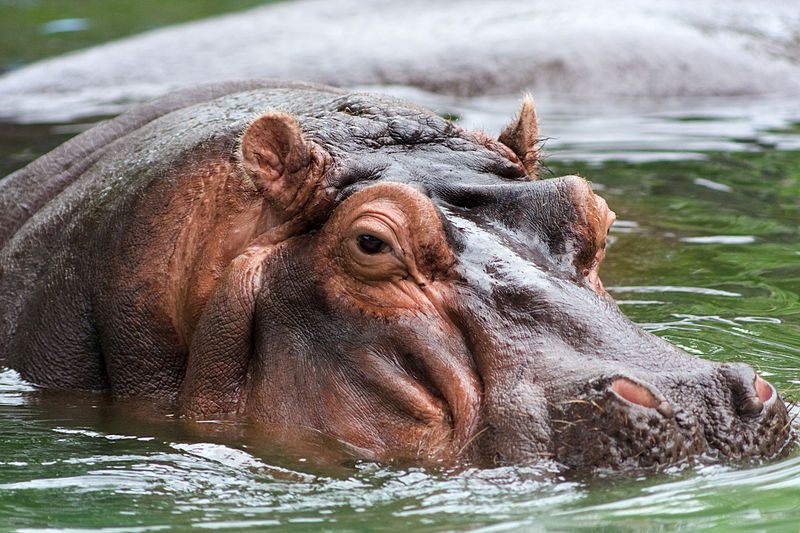
Hippo sweat has an SPF. (Alexdi, Wikimedia)
University of Manchester, ENGLAND
Team Manchester aims to make a corals-friendly sunscreen based upon hipposudoric acid, the sun-protective factor in hippopotamus sweat. The design will include a genetically modified bacteria to stabilize and mass-produce the hipposudoric acid and replace current harmful UV filters in sunscreen.
PLASTICS REMEDIATION PROJECTS
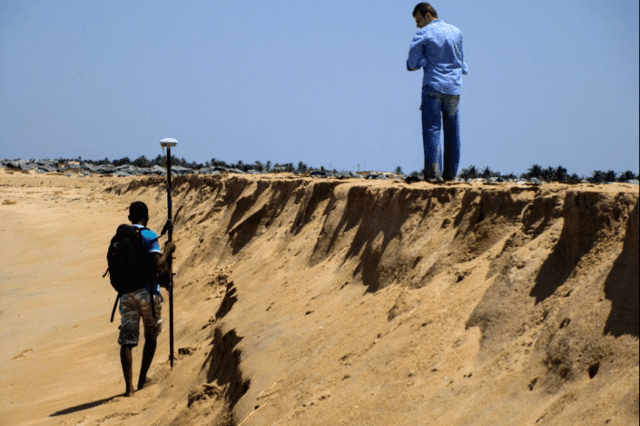
Coastal erosion in Ghana, over 2 meters in height.
ASHESI UNIVERSITY, GHANA
Team AshesiGhana plans to design a project that tackles two marine conservation problems at once. This sea defense system design will incorporate plastics bioremediation and a bio-building mechanism that removes plastics from the ocean and then constructs seawalls to combat coastal erosion.
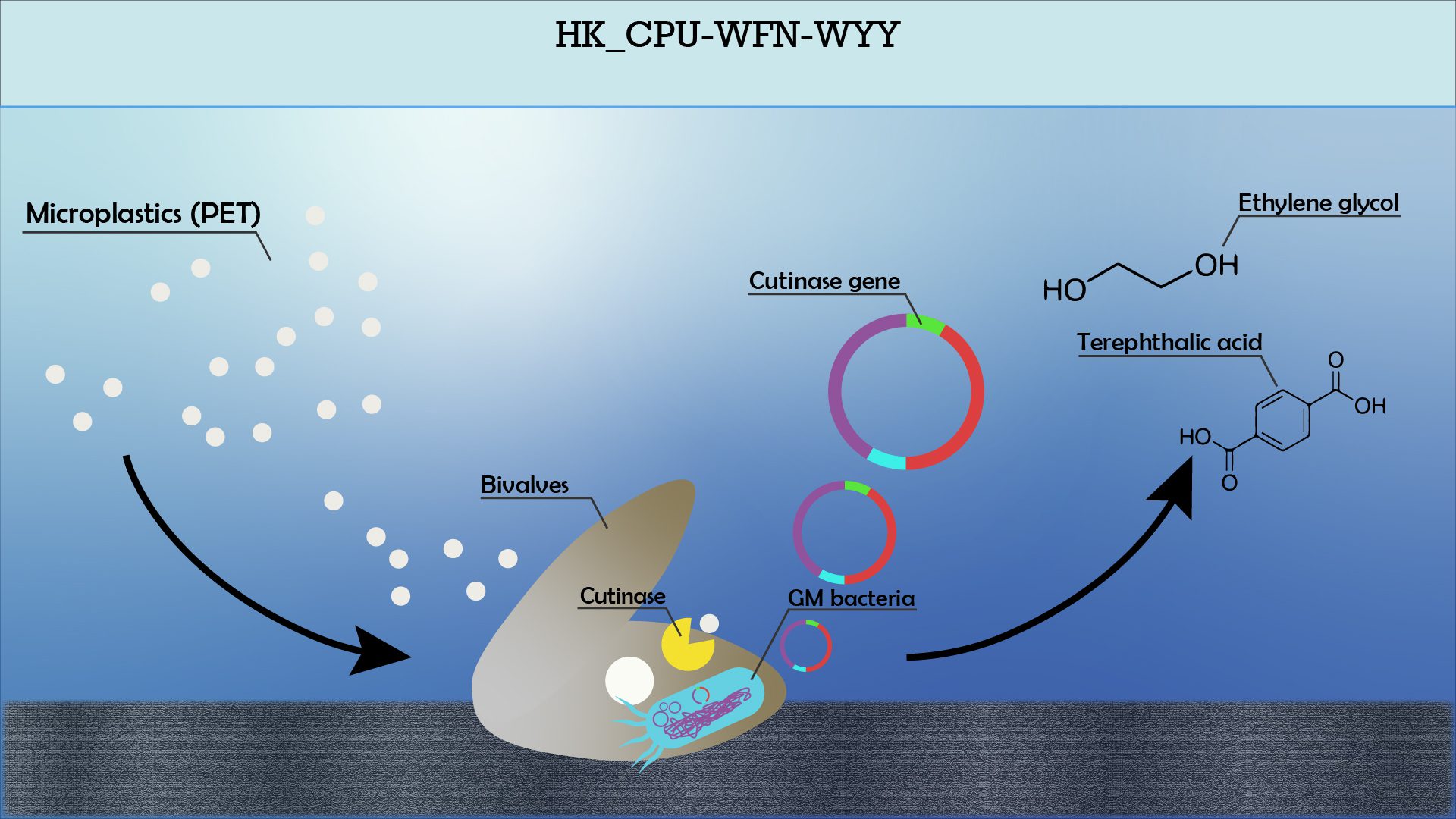
The project design employs bivalves for microplastics remediation.
Team HK_CPU-WFN-WYY (Various high schools), HONG KONG
Team HK_CPU-WFN-WYY proposes to design an efficient, cost-effective way to degrade microplastics by incorporating the cutinase gene into a bacteria symbiotic to local bivalves. With these transgenic bacteria, the bivalves may be able to filter and breakdown microplastics.
SOIL REMEDIATION PROJECT
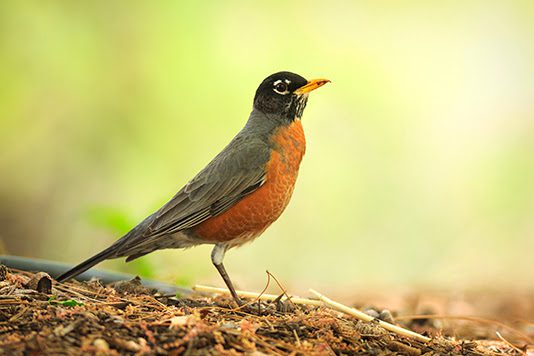
DDT still impacts wildlife in Michigan, including robins.
ALMA COLLEGE, UNITED STATES
Team Alma proposes a design to bioremediate DDT pollution by capitalizing on a natural microbial metabolic pathway found in White Rot fungus (P. chrysosporium). By isolating the candidate pathway and merging it into a single chassis plant or bacterial species, the team may efficiently degrade the problematic pesticide.
GENETIC RESCUE PROJECTS
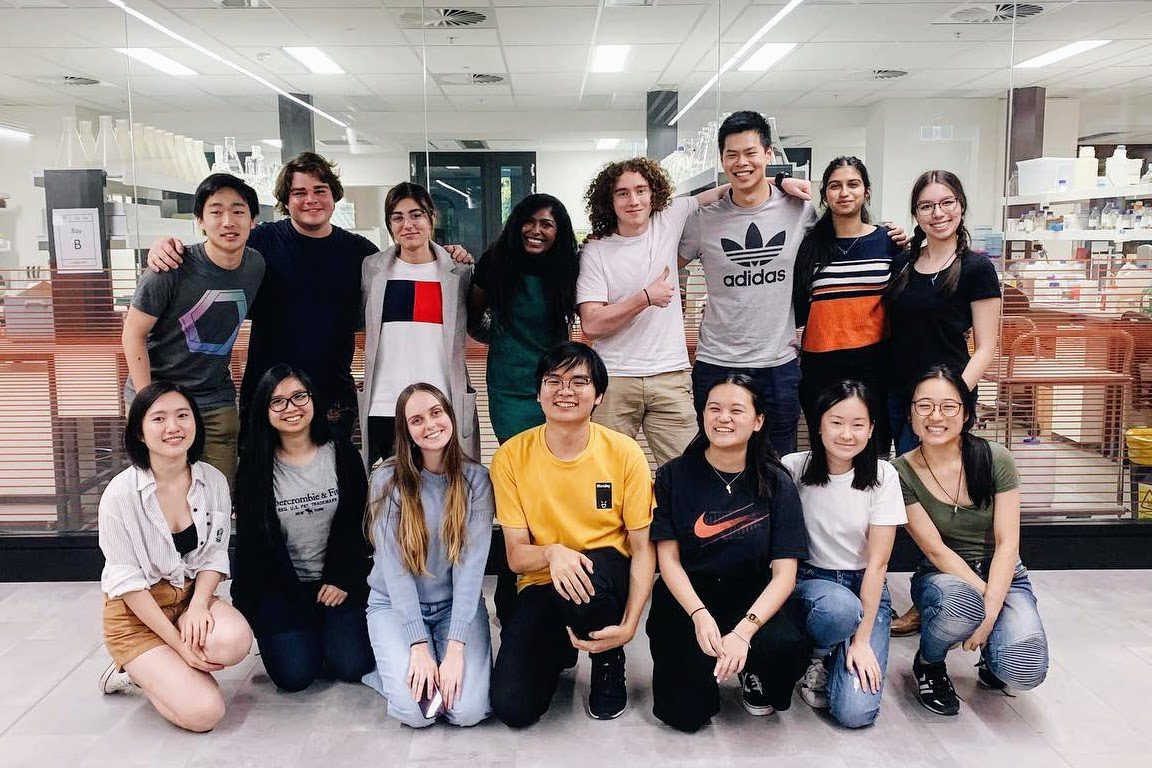
iGEM Team UNSW_Australia 2020.
University of New South Wales, AUSTRALIA
Team UNSW_Australia proposes to design two strategies to increase thermal tolerance of the Symbiodiniaceae algae, a symbiont of coral. The design will involve ex-situ engineering of the symbionts to combat protein denaturation and oxidative stress, then facilitating their uptake by corals before in-situ restoration.
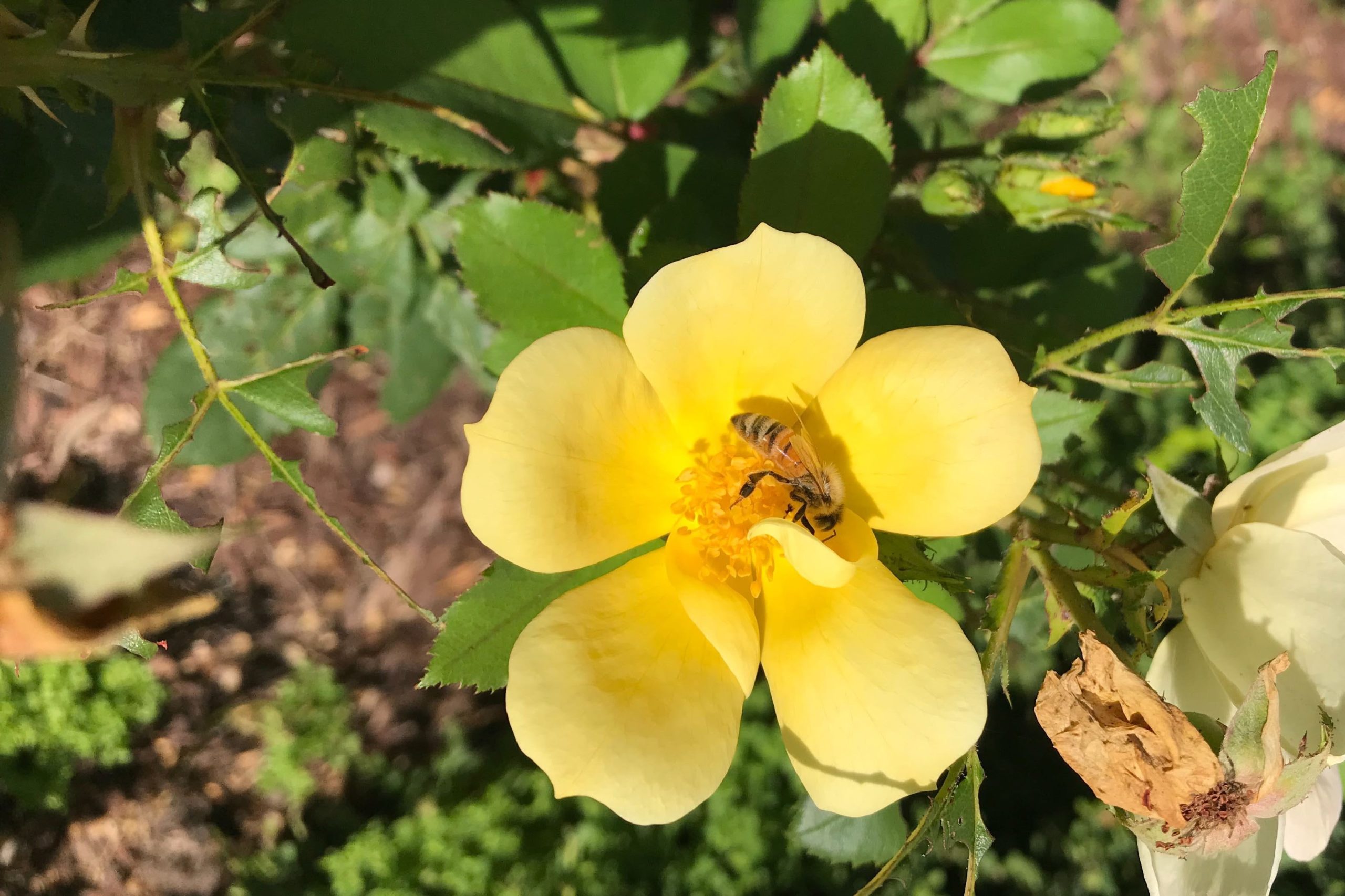
The American honeybee.
Michigan State University, UNITED STATES
Team MichiganState aims to engineer probiotic microbes that may bind and conjugate insecticides and introduce them into the bee gut microbiome. The idea is this may reduce the detrimental effects of insecticide ingestion on bee populations.
BIOCONTROL PROJECT
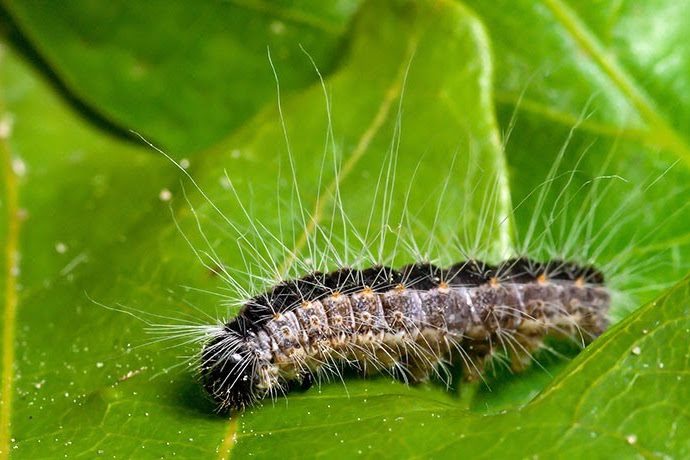
An oak processionary caterpillar. (Christian Fischer Wikicommons)
Maastricht University, Netherlands
Team MSP-Maastricht proposes a biocontrol design for Oak Processionary caterpillars—an invasive species that kills oak trees and causes severe allergic reactions. The design will include modifying a bacterium to produce silencing RNAs unique to the caterpillar, which when sprayed on trees may stop the pest’s reproduction.
CLIMATE PROJECT
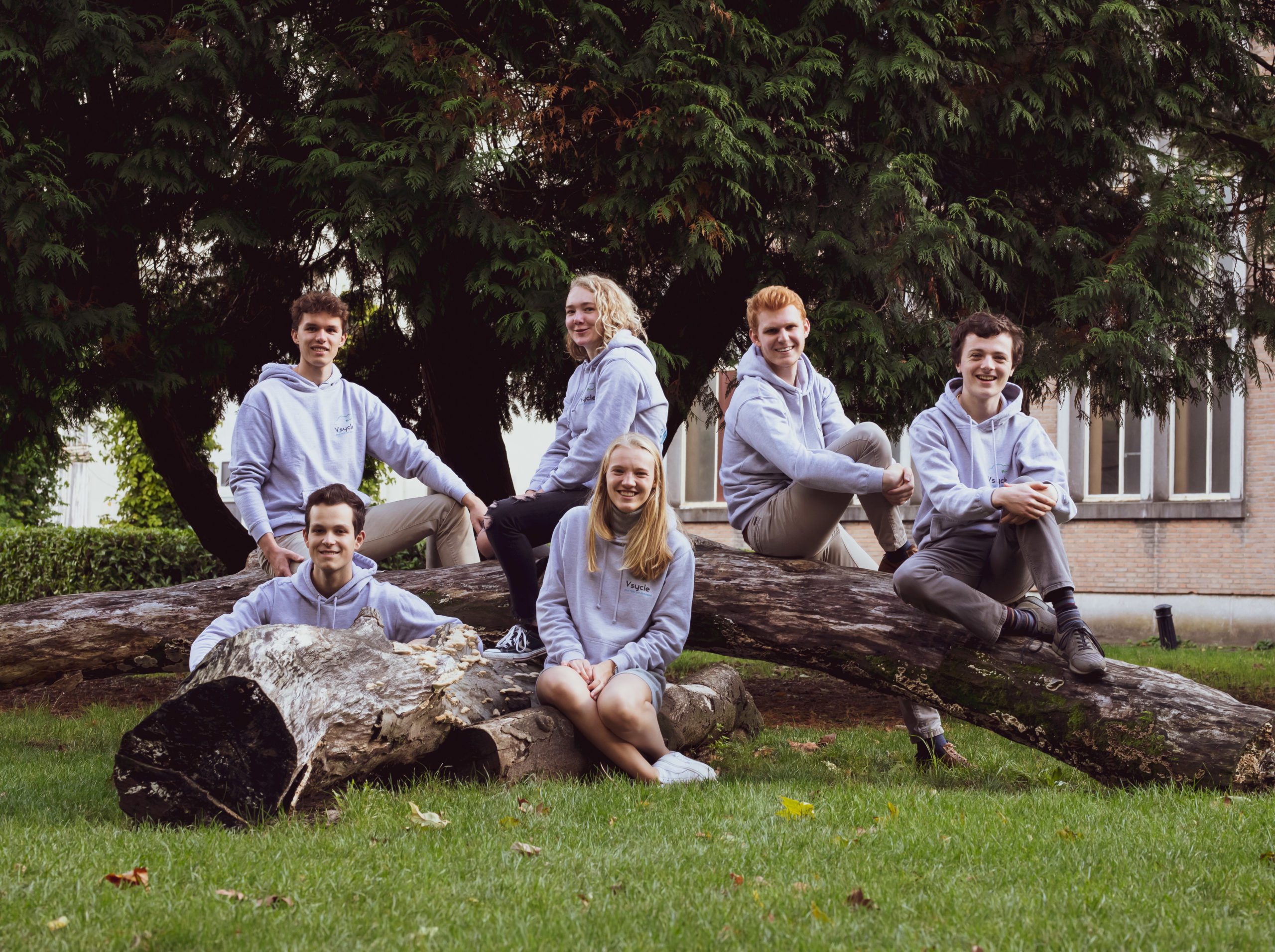
Team UGent, 2020.
GHENT UNIVERSITY, BELGIUM
Team UGent_Belgium aims to design a way to replace the current use of harmful chemicals such as silver iodide in cloud seeding operations with an ecological, sustainable protein-bound vesicle that, when released into the air, may prevent flooding rains or induce rain in arid ecosystems, and even offset effects of climate change.
SYNTHETIC BIOLOGY CAN SAVE THE HORSESHOE CRAB
Horseshoe crabs are bled for Limulus amebocyte lysate (LAL), which the pharmaceutical industry uses for safety testing. But there is a more sustainable, more consistent synthetic alternative to LAL—Recombinant factor C (rFC). Learn more >
